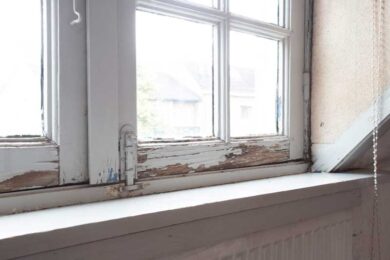Ideal Practices for Making Certain Safe and Thorough Lead Violation Reduction
Attending to lead violation reduction requires a multi-faceted approach to ensure both safety and security and compliance. It's the last clearance procedure, including comprehensive evaluations and lab testing, that really verifies a lead-free environment, making certain long-term safety. How do these techniques adjoin to ensure detailed lead abatement?

Initial Analysis
Carrying out a preliminary assessment is an important primary step in lead violation abatement. This phase includes an in-depth examination of the home to recognize the existence, degree, and specific locations of lead-based threats. Certified experts, such as licensed lead inspectors or run the risk of assessors, must execute an extensive website examination, utilizing devices like X-ray fluorescence (XRF) analyzers to precisely detect and gauge lead concentrations in paint, dirt, soil, and water.
The evaluation must likewise consist of an evaluation of the building's history, previous reports, and any type of grievances or health and wellness issues reported by passengers - Lead Removal Contractors. Recording the findings meticulously is important, as these documents form the basis for developing an efficient abatement approach. An extensive analysis likewise involves sampling and lab evaluation, which are critical to validate the existence of lead and overview succeeding activities
Moreover, it is crucial to interact the results transparently to all stakeholders, consisting of building owners, occupants, and regulative authorities. By making sure that the preliminary assessment is conducted with precision and rigor, specialists can lay a solid structure for a targeted and reliable lead abatement process, eventually guarding public health and making sure compliance with regulative criteria.
Proper Containment
Appropriate containment is essential to stop the spread of lead contaminants during abatement tasks. Properly managing containment decreases the risk of lead dirt and debris migrating to non-work areas, thus guarding both the setting and people outside the immediate work zone.

Regular examinations of the containment location are essential to inspect for breaches or weak points in the obstacle. Any kind of determined problems ought to be without delay resolved to keep the stability of the containment. By sticking to these practices, abatement tasks can effectively regulate lead contamination and alleviate affiliated health and wellness dangers.
Employee Defense
Guaranteeing employee protection is critical during lead abatement jobs to avoid work exposure to hazardous lead particles. Crucial procedures include using personal safety devices (PPE) such as respirators, handwear covers, and full-body fits especially made to block lead dirt and fumes. Employees must undertake comprehensive training on the correct usage and upkeep of PPE, consisting of fit testing for respirators to make sure optimum efficacy.
Design controls, such as regional exhaust ventilation systems, are crucial in decreasing air-borne lead focus in the job environment. Administrative controls need to additionally be applied, including limiting the period of direct exposure and revolving workers to decrease private direct exposure times. Routine medical monitoring and biological surveillance are important for very early discovery of lead absorption, allowing timely treatment and treatment.
Moreover, developing a decontamination procedure is crucial. Employees should adhere to strict decontamination treatments prior to breaks and at the end of their change to prevent lead dust from being lugged outside the work area. This includes comprehensive hand and face washing with lead-specific cleaner and changing out of contaminated clothes.
Thorough Cleanup
Preserving a secure workplace expands past worker protection and encompasses careful cleanup to guarantee lead bits are extensively eliminated from the website. The procedure of meticulous cleanup is critical in preventing the recontamination of the moderated area and protecting both current and future residents.
To achieve a thorough clean-up, all workspace must be methodically sanitized. This includes using specialized HEPA (High-Efficiency Particulate Air) hoover and wet-wiping techniques to capture and get rid of great lead dirt that may have more tips here cleared up on surface areas. It is vital to cleanse all straight surfaces, consisting of floors, window sills, and countertops, as well as vertical surfaces that might have caught lead particles.
Workers need to use ideal individual safety tools (PPE) during cleaning to avoid direct exposure to recurring lead dust. Made use of cleaning products such as wipes, sponges, and wipe heads must be disposed of according to hazardous waste disposal regulations.

Final Clearance
Final clearance is the crucial wrapping up phase of lead reduction that establishes whether the site is safe for reoccupation. This vital action includes extensive assessment and screening to verify that all lead hazards have been efficiently gotten rid of.

Last clearance testing not only shields future residents moved here yet also makes sure conformity with local, state, and government regulations. In addition, it acts as a recorded recognition of the reduction specialist's adherence to industry best practices. Making certain a comprehensive and discover here effective final clearance is crucial in safeguarding public wellness and cultivating count on the reduction process.
Conclusion
Making certain secure and extensive lead violation abatement demands a complex technique including initial evaluations with advanced detection approaches, reliable control methods, rigorous employee protection procedures, and precise clean-up treatments. The last clearance phase, featuring thorough inspections and laboratory testing, is crucial to confirm compliance with EPA standards. Adherence to these ideal practices assures a secure atmosphere for residents, minimizes health dangers, and upholds governing demands, therefore promoting public wellness and security in lead-affected locations.